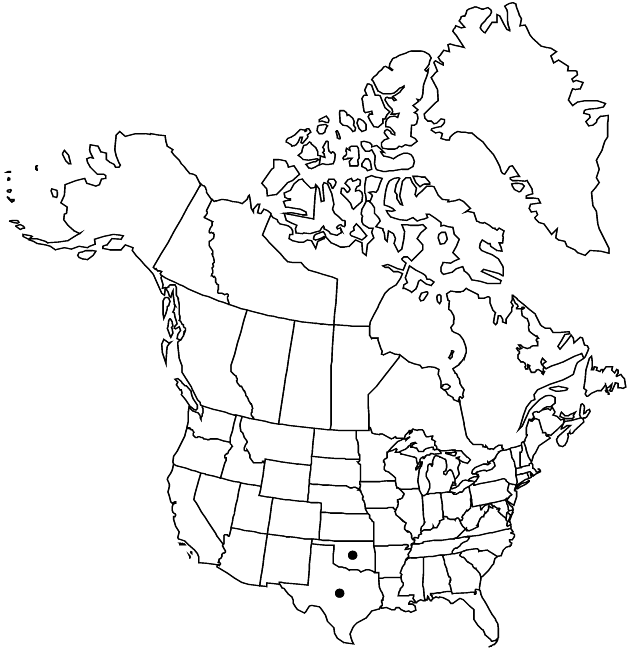Difference between revisions of "Aphanostephus pilosus"
Proc. Acad. Nat. Sci. Philadelphia 13: 457. 1862.
Common names: Hairy lazydaisy
Endemic
imported>Volume Importer |
imported>Volume Importer |
||
| Line 51: | Line 51: | ||
|publication year=1862 | |publication year=1862 | ||
|special status=Endemic | |special status=Endemic | ||
| − | |source xml=https:// | + | |source xml=https://bitbucket.org/aafc-mbb/fna-data-curation/src/2e0870ddd59836b60bcf96646a41e87ea5a5943a/coarse_grained_fna_xml/V19-20-21/V20_813.xml |
|tribe=Asteraceae tribe Astereae | |tribe=Asteraceae tribe Astereae | ||
|genus=Aphanostephus | |genus=Aphanostephus | ||
Latest revision as of 21:05, 5 November 2020
Annuals 6–30 cm; vestiture sparsely hispido-pilose, stem hairs spreading at right angles, straight, 0.6–2.4 mm, thick-based. Phyllary apices long-acuminate. Ray florets 13–21. Disc floret corollas: base not swollen and indurate. Cypselae: hairs apically straight; pappi coroniform, ciliate, 0.2–0.7 mm. 2n = 8.
Phenology: Flowering May–Jul.
Habitat: Sand or sandy clay, open scrub oak woodlands, mesquite savannas, fields, disturbed sites, roadsides
Elevation: 30–200 m
Discussion
Aphanostephus pilosus is recognized by its reduced habit, distinct vestiture, small heads, and long-acuminate phyllary apices.
Selected References
None.
Lower Taxa
None.
